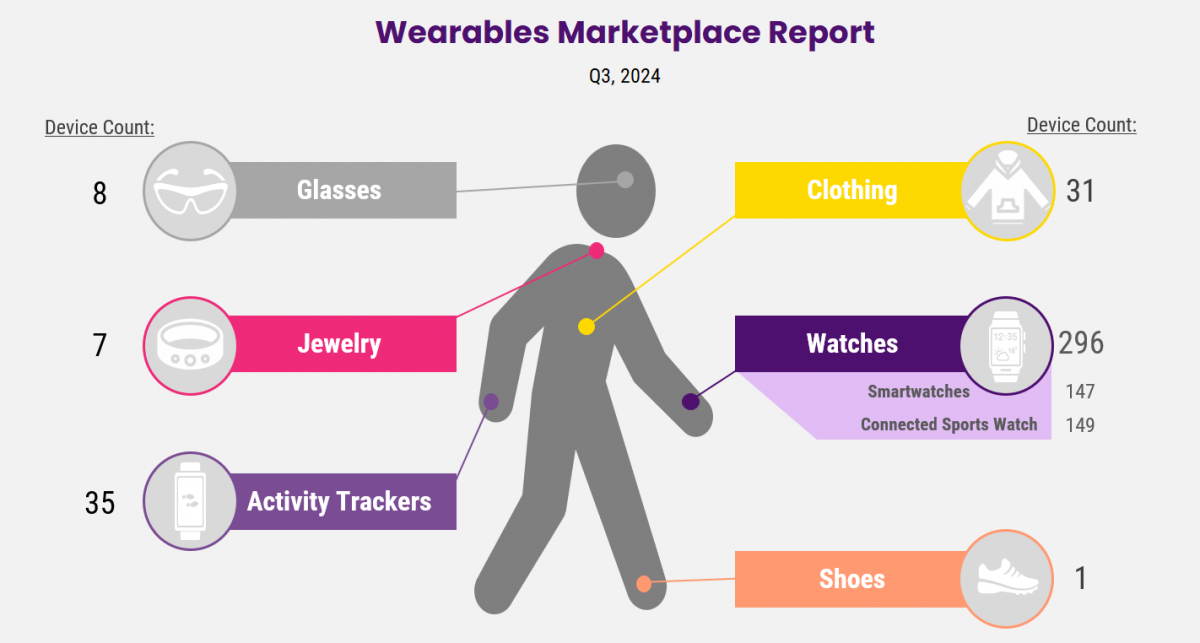Wearables Week in Review
The week when:
- Smart glasses mature?
- Put a ring on it?
.
The week when:
- Smart glasses mature?
- Put a ring on it?
The week when:
- Oura doubles down on sickness tracking
- Humane pivots to software
Slight Ownership Decline
Smartwatch ownership has decreased slightly in the past 12 months, dropping from 42% to just over 40%. We had projected essentially a flat year for growth, and we still expect that ownership will bounce back in the coming year.
Promotions
Promotions are continuing to drive sales with devices such as Apple’s Watch Ultra showing $100 discounts, for example, several times this year. This is helping to drive sales as noted above, but not helping to pull in significant numbers of new customers.
Flattening Curve
The week when:
- Echo Frames for Delivery?
- Baidu launches glasses
-Black Friday deals galore
The quarterly Wearable Marketplace report provides a detailed listing of the latest consumer wearable products that are in market, or expected to launch soon. The report tracks a wide variety of wearable product metrics and also provides useful infographics on the various wearable devices and device categories.

This VR and Smart Glasses report is our second wave tracking the competitive market, in terms of ownership of these devices and is intended to provide directional information about the market.
As such, we have some caveats regarding the ownership data, as follows:
The week when:
- Meta previews Orion AR glasses
- Meta Ray-Ban smart glasses updates
The Wearables Profile Report provides a side-by-side view of different consumer profiles, offering an easy way to view differences among the consumer base. The report leverages the same data as the Ownership and Usage reports.
As we saw in the Fall 2024 Wearables Ownership Report, smartwatch growth has declined, dropping to 40 percent of the US adult population from its previous high of 42 percent. But sales are increasing which reflects a healthy base of smartwatch owners who are actively using the watch and who are entering their replacement cycle. Indeed, unlike smartphones, which are stretching the replacement cycle to between three and four years, we see that most smartwatch wearers are looking to replace their devices somewhere between one and three years.
The current economic environment continues to put pressure on the wearables market. We saw smartwatch ownership flatten in the previous wave of research and this time around we have seen a slight decline in active ownership (slipping from 42% to just over 40%). Partially this is seasonal: summer weather seems to drive slightly less ownership than winter, when consumers are more driven to exercise in preparation for the summer months.